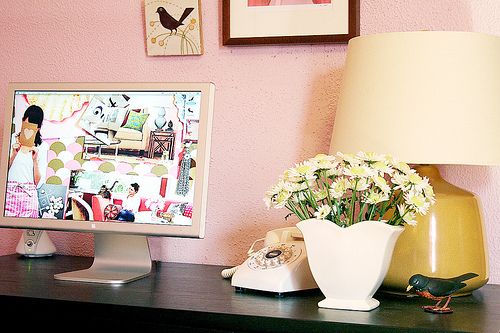It’s easy to go overboard with things you like.
Making a mood board is a good exercise especially when testing out ideas for a hypothetical space (or wedding/event/product/website/whatever you’re designing). Even if you don’t like to be overly controlled, a mood board enables you to find, collect and edit your thoughts; adding better clarity and context to your decorating decisions. The last thing you want is to come home to disagreeing furniture staging their own gun fight at the O.K. Corral.
Some general practices for building a mood board include:
1. Make it Editable – if you’re making a physical board, using pin-boards or masking tape – that way you can add, remove or rearrange things as you progress. Electronic mood boards are a good option as they’re easy to edit and great for saving online inspirations.
2. Maintain some Proportion – not an absolute rule but if it’s going to look large in your room it should be larger on your mood board.
3. Arrange the Space – try to arrange your mood board as you would place them in your room i.e. ceiling fans appear at the top of your mood board, carpets below, curtains next to window fixtures etc.
4. Layer – layering textures such as wood grains for tables and furniture fabrics over wall paint swatches can help add depth and a better feel for how these items will look in your home.
5. Keep an Eye on it – put your mood board within easy reach – you want to keep checking back to see if you’re still hot about that fuchsia wall or if you’ve new ideas that would look great in the space – it could be at your desk, or if it’s an e-mood board, your computer desktop, screen saver or blog.
6. Keep Collecting – whenever you come across something you like whether it’s a colour swatch, fabric sample, magazine cut out, online image or a sketch you’ve done – keep it. If it doesn’t already fit in, you can keep it in a clear folder for future reference or reuse if you change your mind. Take note of shop names/locations if you think you might need to go back there and buy the items.
Here are a few great resources to help you get started (plus a few extras):
– Olioboard – specially for interior design; strong community and some retail links
– Mydeco – specially for interior design; great access to unique furniture, good community and retail links
– Flickr – the defacto place for pictorial inspiration and great for collecting images
– Pinterest – another great source of images and ideas
And here are just a few awesome boards created by some very talented people.
Below: The inspiration board in Drew Barrymore’s office which was designed by Ruthie Sommers as featured in Domino Mag.
Below: Stylish mummy, Nicole Balch from Making it Lovely frequently features inspiration boards on her gorgeous blog. Here’s one she uses as an electronic work of art.
Below: A beautiful colour story board created by interior design student, Kylie Sarley, on her blog Bandelle.

Below: An attic office mood board by bmoreguy using olioboard.



